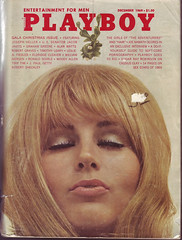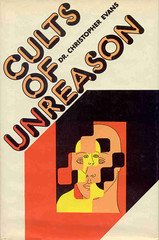“First there is nothing, next there is depth of nothingness, then a profundity of blue”
I recently acquired the book above: “Art in Theory“. This is not a book you read from cover to cover, I am reading it the way I like reading most, by the index (and aided by Google book search). The introductory essays to each chapter are very good.
A copy from my first impressions posted on the Art and Pop wiki:
“One single text” by Bataille
Barthes in the From Work To Text on Georges Bataille:
- “How do you classify a writer like Georges Bataille? Novelist, poet, essayist, economist, philosopher, mystic? The answer is so difficult that the literary manuals generally prefer to forget about Bataille who, in fact, wrote texts, perhaps continuously ‘one single text’.”
This reminds me of Richard Simmillion, a recurring character in W. F. Hermans‘s novels and stories. Hermans is also an author who wrote one single text.
On Bachelard
“Facts long amassed, patiently juxtaposed, avariciously preserved, are suspect. they bear the stigma of prudence, of conformism, of constancy, of slowness,” writes Gaston Bachelard. –via ON INVENTING OUR OWN ART by Ibram Lassaw
Bachelard is also mentioned by Barthes in Mythologies.
- “But since Saussure himself, and sometimes independently of him, a whole section of contemporary research has constantly been referred to the problem of meaning: psycho-analysis, structuralism, eidetic psychology, some new types of literary criticism of which Bachelard has given the first examples, are no longer concerned with facts except inasmuch as they are endowed with significance. Now to postulate a signification is to have recourse to semiology. I do not mean that semiology could account for all these aspects of research equally well: they have different contents. But they have a common status: they are all sciences dealing with values. They are not content with meeting the facts: they define and explore them as tokens for something else.”
Bachelard is also mentioned by Yves Klein in a Sorbonne lecture given in 1959.
- “I unhappily did not have the pleasure of discovering the writings of Gaston Bachelard till very late, only last year in the month of April 1958. […] will reply by borrowing yet again from Gaston Bachelard that marvelous passage concerning blue from his book Air and Dreams. “This is primarily a Mallarmean document in which the poet, living in ‘contented world-weariness amidst oblivious tarns’, suffers from the irony of blueness. He perceives an excessively hostile blueness which strives with an indefatigable hand to ‘fill the gaping blue holes wickedly made by birds’. […] and that is the dwelling place of Bachelard’s beautiful phrase: ‘First there is nothing, next their is depth of nothingness, then a profundity of blue’.”
These are some of the quotes which make this volume worthwhile. I recommend this book.











